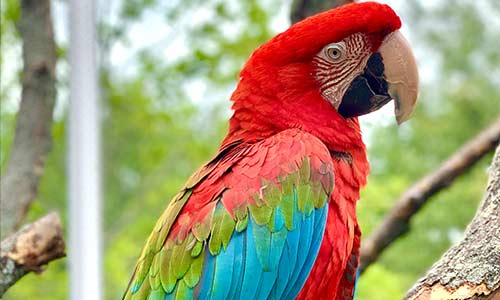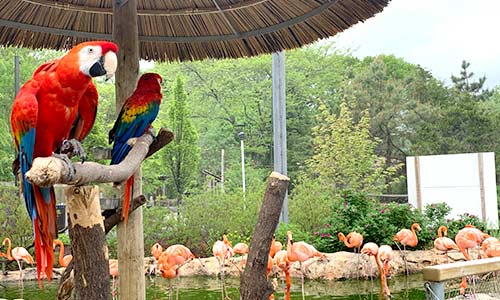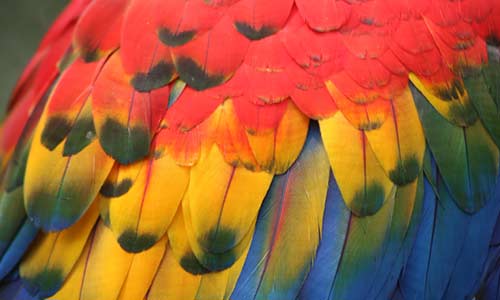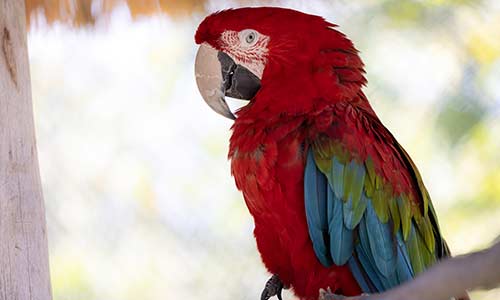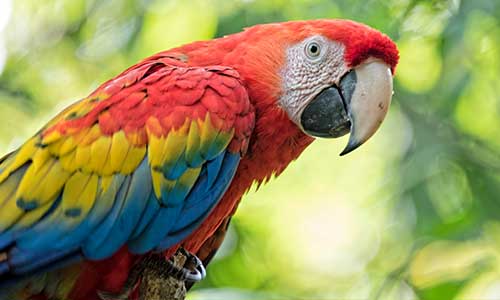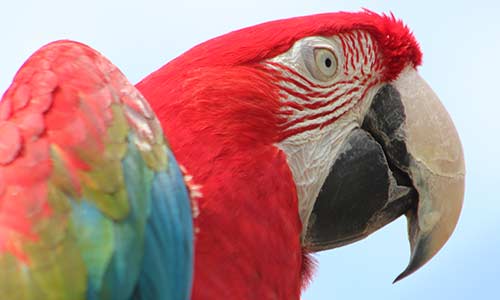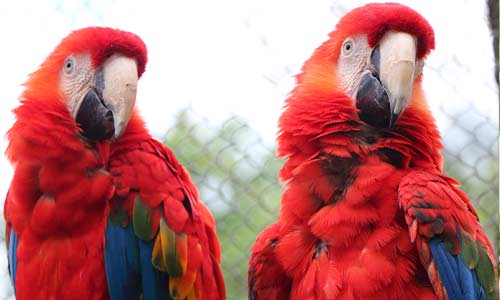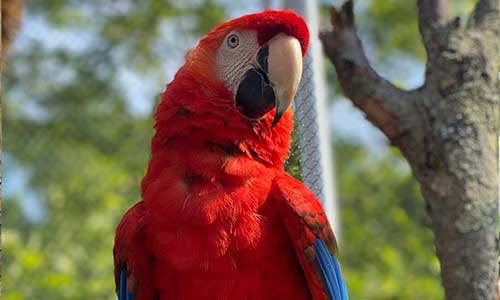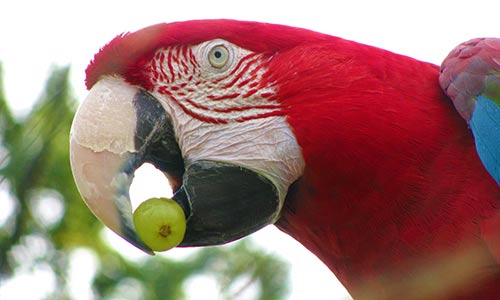Scarlet Macaw
Ara macao
| ⚠️ Animal Alert The macaws are kept indoors when temperatures drop below 60 degrees. Visit our Winter Visits page to learn more about the amazing animals you can see during the winter! |
About the Scarlet Macaw

Geographic Range:
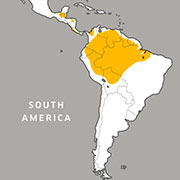
Class: Aves
Order: Psittaciformes
Family: Psittacidae
Genus: Ara
Species: macao
The scarlet macaw’s powerful black beak is designed to crush or open even the hardest nuts and seeds. In fact, its beak is powerful enough to snap a broomstick in half! Strong toes give macaws a good grip on perches and also come in handy for "holding" favorite foods, like nuts, fruits and bugs. Macaws serve an important role in their ecosystem by dispersing seeds and nuts throughout their territory.
Scarlet Macaw Facts
Appearance:
Most of the plumage on the scarlet macaw's body, wings and tail is bright red. However, what makes them unique are the yellow and blue feathers in their lower wings. Their faces have a white, bare patch with few feathers. The scarlet macaw's bright coloration provides camouflage, helping them blend in with leaves and bright fruits. The macaw’s powerful beak is designed to crush or open even the hardest nuts and seeds. In fact, its beak is powerful enough to snap a broomstick in half.
Strong toes give macaws a good grip on perches and also come in handy for "holding" favorite foods, like nuts and fruits.
Size:
- Length: 32 inches long with tail
- Weight: 2 pounds
- Wingspan: 3 feet
Diet:
Seeds, fruits, plants, and occasionally flowers and nectar. Macaws will sometimes eat clay in order to absorb the toxic chemicals found in many of the plants they eat.
Reproduction:
Scarlet macaws have been known to breed at 3 to 4 years of age and will breed during any time of the year. Their clutch consists of two to four eggs which incubate for 24 to 26 days. Chicks weigh about 0.05 pounds when they are born and leave their parents after one to two years.
Behavior:
These birds are known to move in mated pairs during the daytime, but sleep in large flocks at night. The females spend their time incubating the eggs, while males spend the day bringing back food for the mother, and eventually, the chicks.
Habitat/range:
Scarlet macaws live in Southern Mexico, Central America, and in South America to the east of the Andes and as far south as Argentina.
Role in their habitat:
Macaws serve an important role in their ecosystem by dispersing seeds and nuts throughout their territory.
Median Life Expectancy:
In the wild: 40 – 50 years
Fight Wildlife Trafficking:
Catching and selling wild macaws illegally is called trafficking. Many of the birds die or get sick. Support laws against trafficking and don't buy macaws as pets.
You Can Find This Animal in the Caribbean Coast
A bird to be heard!
These birds communicate with screams, squawks and squeaks. The mouthy macaw's screams can be heard two miles away!
You May Also Like
At Franklin Park Zoo:
At Stone Zoo:

